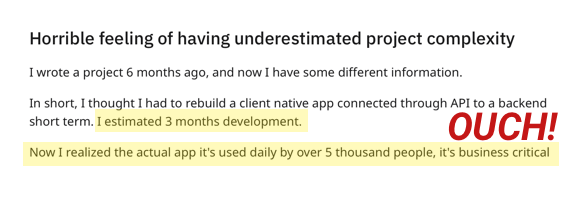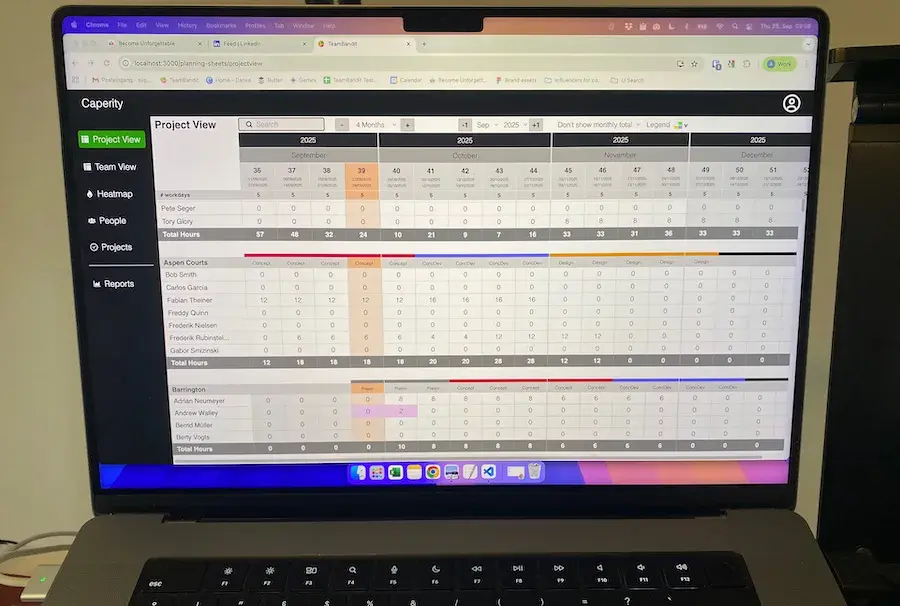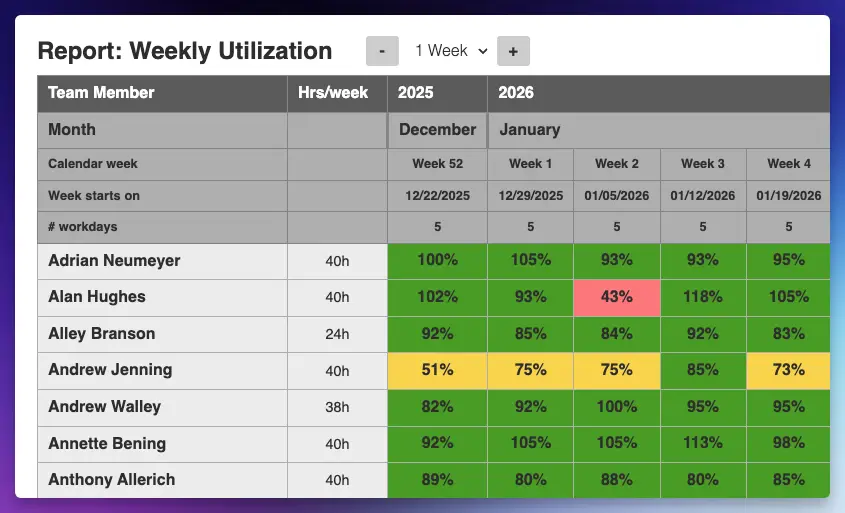I have good news for you: 90% of project delays can be avoided by you.
They are often not caused by work taking longer. The reasons are often unclear responsibilities and miscommunication.
So, how can you avert an embarrassing delay?
Those strategies have greatly helped me:
Set and communicate clear deadlines
I know this sounds obvious to you. But think for a moment: have you been consistently assigning end dates for project tasks? Or did you take the easy path and asked your team member: ‘Could you do this whenever you got time’?
For the same reason that we don’t want to be held accountable and tied to a deadline, we don’t like to dictate others what to do — and when to finish work.
We don’t want to come across like the big boss. But a group team like a project can only become a success if everybody is held accountable and commits to agreed deadlines.
My recommendations:
- No matter how big or small a task, always define a desired end date
- Communicate the end date to the person in charge (in email, minutes and verbally)
- Never assign more than one responsible to the same task. There should only be one responsible per task.
Read my article on setting deadlines for project tasks.
Invest time to understand the requirements
The customer’s requirements determine the complexity of the project. And the complexity determines effort and duration of the project.
The problem is this: If you only got a poor understanding of requirements, you will get bad estimations. And bad estimations will necessarily lead to delays, because you’ll be thinking: ‘SH*T, I’ve completely underestimated this project!’
Like this person:

I don’t want this to happen to you, because if you started off with wrong estimations and lack of understanding of requirements, you can’t really turn around your project. It will simply tank.
How can you improve your understanding of the requirements — and thus avoid embarrassing project delays?
Do this:
- Start with requirements analysis as early as possible (even before the project)
- Use requirements analysis techniques like interviews or observation to look at the requirements from different perspectives
- Spend as much time looking at requirements as needed. Your goal must be that you are able to describe the requirements in your own words with zero gaps in knowledge
- Document your findings in a requirement specification document
- Have the customer sign the requirement specification
I suggest you read my article on gathering requirements.
Define clear roles and responsibilities
I’ve seen this happen over and over again — in other projects as well as in mine: Work gets delayed because — in the middle of things — there is an issue about responsibility.
Maybe a key user is refusing to take an important decision because it’s not part of her authority. Or maybe she’s feeling uncomfortable doing the work (e.g. giving a presentation in front of the CEO) because this is not her thing.
In both cases you have to find the right person who can do the job or take the decision. And this is where your schedule gets out of whack, because the clarification process can be slow.
Generally, responsibility issues of the following kind are common:
- the person doesn’t want to do the expected work
- the person is not entitled to take a decision
- the person doesn’t have the competence to complete a job
What you need to do is define clear responsibilities. When going into a project, every team member should know exactly what they have to do and what responsibilities they have.
Tips:
- Write down what you expect from each team member (responsibility)
- don’t just define technical responsibilities; include also things like communication (“I want you to regularly align with X”, “I want you to host the X meeting”, “I want you to meet with John from marketing once every two weeks”)
- go over the responsibilities with every person. You can do this in a kick-off but I recommend doing a one on one review.
Read also: How to define roles and responsibilities in projects
Meticulously (and mercilessly) track progress of tasks
People hated me for being so insisting when it comes to follow up. I spoke to them several times a week, always asking the same question: Are you making progress with your data analysis? Do we have an approved specification yet?
Even though reminding people about their task didn’t make me popular, I knew it was the right thing to do. Because in the end I had to make sure the project would go live on time. And the only way to ensure that was to ensure tasks were finished according to plan.

Do you want to be successful with your project? Then you have to be equally meticulous and merciless in tracking progress of work. Treat team members with respect and motivate people to give their best. But also be persistent and make people aware that you need the work to be done on the agreed date.
The good thing about doing regular follow up: You are up to date on progress and are able to turn around things when a task gets into trouble. You can coach, advise or help when a team member is stuck. A delay can be averted or at least minimized by doing regular follow up.
Do this:
- use an action tracking sheet to record tasks
- define a responsible and due date for every task
- follow up with team several times per week (email, phone, in person)
- if a task becomes an issue, understand what’s the problem: is it lack of knowledge, technical problem, does the task require input from someone else etc. Then help solve the problem
Watch my video and see how I track action items in Excel:
Clarify requirements for tasks (and discuss handover)
In a project, tasks are performed in a particular order, with one task delivering the input for the next task in the sequence. Example: First task is the delivery of bricks of a house. Subsequent task is to actually build the house using the bricks.
What often leads to delays is when one task cannot start because the predecessor task did not deliver the right output. In our example this would be the house cannot be built because the wrong type of bricks were delivered.
This is a simple example, but generally the things is that every task has certain requirements to be executed properly. If those requirements are not met, the task cannot start and the project is delayed until the preceding task has provided the correct “output”.
Here’s another real example my wife told me (she works in medical research): My wife’s work group is performing statistical analysis of medical conditions. They rely on measurements of blood values. The blood analysis is done by a separate team, while my wife’s team is just doing the statistical work. The problem was that the group doing the blood analysis was using the wrong chemical solution. One that wouldn’t work in combination with the statistical processes used by my wife’s team. As a result, the whole blood analysis was useless and they had to wait for months in order to get accurate samples (note: they are still waiting).
What to do:
- For every task on the schedule, clarify the requirements and conditions that must be met so the task can be performed successfully. You get these details from the person carrying out the work (“I need X and Y so that I can do the job”). Share this information with the responsible for the preceding task. Even better:
- Bring together those people that are collaborating on a series of tasks. They should meet in person and discuss how to best work together and what one needs from the other in terms of information or input.
Attend the most critical project meetings
Apart from the usual project update meetings, there are meetings which stand out because they are super critical. An ad hoc meeting to discuss an issue that could potentially bring the project to an end. An escalation meeting scheduled by a stakeholder who’s denied to approve project work. I call them ‘showdown meetings’. If those meetings don’t bring a solution, an immediate halt of the project could be the consequence.
As the project manager you should always be part of those meetings. In fact, you should be the one inviting to the meeting if it is so critical. This way you can control attendance and influence and facilitate the discussion so that an agreement is reached or an issue is resolved.
Track availability of team members
You have to know the availability of your team members – when they are on vacation, when they are busy with other projects or when they are only available on call.
If you don’t know this, you will run into surprises because in the critical moment a person you’re looking for is not available. And the task gets delayed.
This rule applies also to important stakeholders — middle or top managers who you might need an approval from. They are often away on business trips or involved in other work. They may not always be available when you need them. Check before when they are available.

Know who you need approval from (and stay in touch with approvers)
At various steps in a project, work has to get approved in order to move forward. It starts with things like the project budget or the scope which has to be approved by the customer.
Further into a project you have to get approvals for completed work or for documents that were prepared, such as requirement specifications or documentation of test results showing that a product delivered the desired results.
This is where you easily run into delays, most commonly for these reasons: (1) you forgot to involve an important stakeholder who has a saying in the project and who in fact has to decide in important topics or who has to approve certain parts of the project work.
Example:
(2) Another cause for delay is that a stakeholder with approval authority is absent at the time you require his approval. He may be on a 5-week business trip with no chance to access him. Or he may simply be skiing in the Rockies and you can’t get a hold of him. If there’s no deputy who’s got the authority to approve or decide, that’s bad luck for you because you have to wait for his return.
Here’s what you should do:
- Identify all stakeholders before you start the project. To see how this is done, read my blog post on finding out the stakeholders for a project.
- Keep in touch with your most important stakeholders
- Make a list of which stakeholder has to approve what kind of things
- Check the calendar of your stakeholders to ensure they can be reached when there’s an important decision to be made.
Are you ahead of schedule? Start with subsequent work
In projects, you usually don’t have any free time. That is time you just have nothing to do. But every once in a while, some tasks are completed before the scheduled date and you suddenly have some unexpected contingency. This is a rare but great opportunity to take risk out of your project: You now can start earlier with the next piece of work and thereby have some extra buffer when other tasks get delayed.
What to do:
- When a task finishes before plan, start working on tasks that are coming next.
Build some contingency into your schedule
Remember that project delays are either caused by bad planning or by delays in the work. To prevent a situation where you’re running out of time, you should add a reasonable amount of buffer (also called contingency) to every task. I’ve gone into detail about how much buffer you need in a project. Read this article!
What to do:
- For every task, add a few extra hours or days as a contingency. It’s totally normal for work to get delayed — people falling ill, technical issues — and you need to factor in the chance of this happening.
Project delays can be avoided
To close this article let me emphasize this: the success of your project is largely controlled by you. Issues and small delays are common but you can do a lot to limit their damage.
The best strategy is of course to prevent delays from happening in the first place. In this article I’ve covered the ways that help you achieve this. It is a combination of closely following the progress of tasks and close communication within the team and with stakeholders. This is your recipe for success!
Author
-
Hi, I’m Adrian, a Senior Project Manager and the Creator of Tactical Project Manager, where I teach a pragmatic approach to project management. Led large-scale IT and business projects for over 10 years. My goal is to enable you to lead any project with confidence.
View all posts


